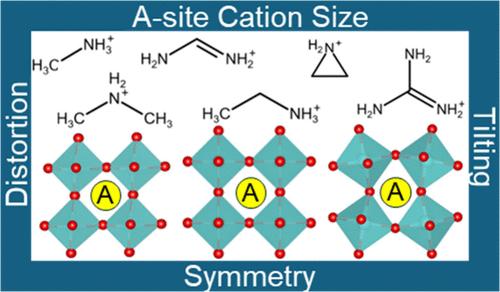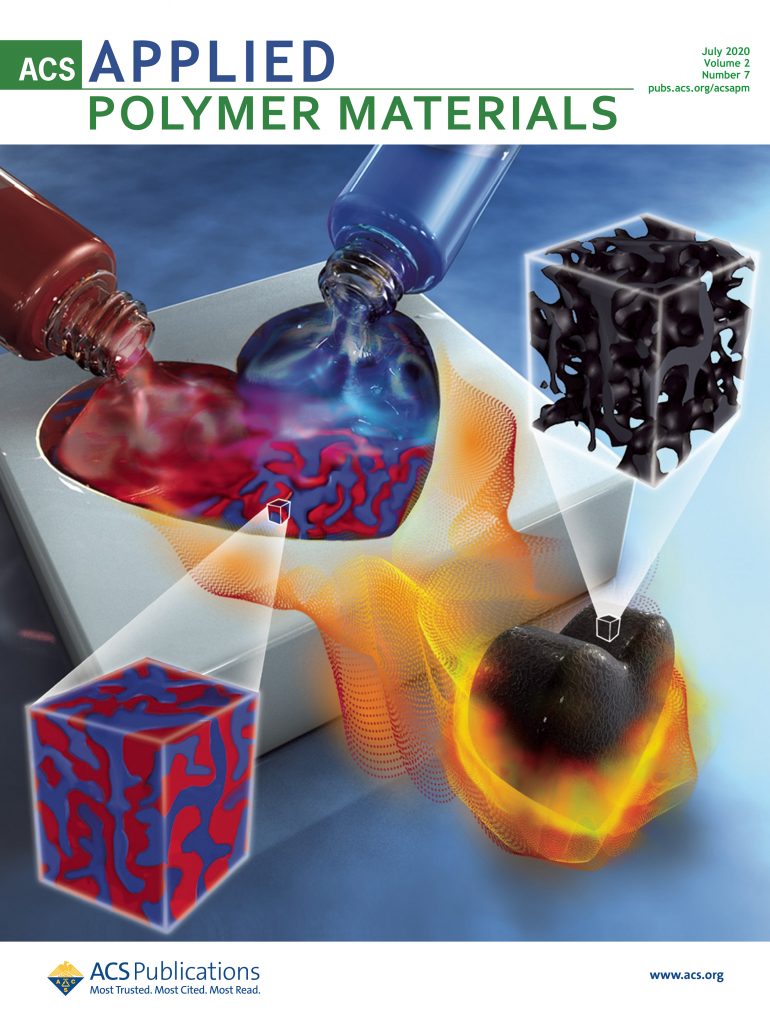A-Site Cation Chemistry in Halide Perovskites
IF 4.4
2区 化学
Q2 MATERIALS SCIENCE, MULTIDISCIPLINARY
引用次数: 0
Abstract
Metal halide perovskites are an important class of semiconductors now being implemented as photovoltaic absorbers and explored for light emission, among other device applications. The semiconducting properties of halide perovskites are deeply intertwined with their composition and structure. Specifically the symmetry, tilting, and distortions of the metal halide octahedra impact the band structure and other optoelectronic properties. In this review, we examine the various compositions of monovalent A-site cations in three-dimensional (3D) halide perovskites AMX3 (M = divalent metal; X = halide). We focus on how the A-site cation templates the inorganic metal-halide perovskite framework, resulting in changes in the crystal structure symmetry, as well as M–X bonding parameters, summarized in a comprehensive table of AMX3 structures. The A-site cation motion, effects of alloying, and 2D Ruddlesden–Popper perovskite structures with unique A-site cations are further overviewed. Correlations are shown between these A-site cation dominated structural parameters and the resulting optoelectronic properties such as band gap. This review should serve as a reference for the A-site cation structural chemistry of metal halide perovskites and inspire continued research into less explored metal halide perovskite compositions and structures.

卤化物过氧化物中的 A 位阳离子化学
金属卤化物包晶是一类重要的半导体,目前正被用作光电吸收剂,并在光发射和其他设备应用方面进行探索。卤化物包晶的半导体特性与其组成和结构密切相关。具体来说,金属卤化物八面体的对称性、倾斜度和畸变会影响带状结构和其他光电特性。在本综述中,我们研究了三维(3D)卤化物包晶 AMX3(M = 二价金属;X = 卤化物)中单价 A 位阳离子的各种组成。我们重点研究了 A 位阳离子如何模板化无机金属卤化物包晶框架,从而导致晶体结构对称性以及 M-X 成键参数发生变化,并在 AMX3 结构综合表中进行了总结。此外,还进一步概述了 A 位阳离子的运动、合金化的影响以及具有独特 A 位阳离子的二维 Ruddlesden-Popper 包晶结构。研究显示了这些以 A 位阳离子为主的结构参数与由此产生的光电特性(如带隙)之间的相关性。这篇综述应作为金属卤化物包晶的 A 位阳离子结构化学的参考文献,并激励人们继续研究探索较少的金属卤化物包晶成分和结构。
本文章由计算机程序翻译,如有差异,请以英文原文为准。
求助全文
约1分钟内获得全文
求助全文
来源期刊

ACS Applied Polymer Materials
Multiple-
CiteScore
7.20
自引率
6.00%
发文量
810
期刊介绍:
ACS Applied Polymer Materials is an interdisciplinary journal publishing original research covering all aspects of engineering, chemistry, physics, and biology relevant to applications of polymers.
The journal is devoted to reports of new and original experimental and theoretical research of an applied nature that integrates fundamental knowledge in the areas of materials, engineering, physics, bioscience, polymer science and chemistry into important polymer applications. The journal is specifically interested in work that addresses relationships among structure, processing, morphology, chemistry, properties, and function as well as work that provide insights into mechanisms critical to the performance of the polymer for applications.
 求助内容:
求助内容: 应助结果提醒方式:
应助结果提醒方式:


